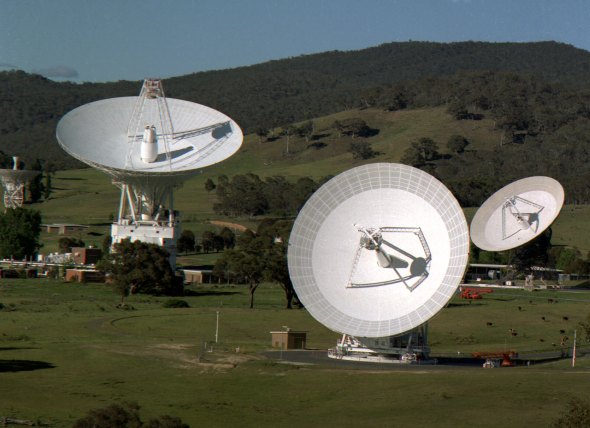The Voyager 1 spacecraft has become the first man-made object to reach interstellar space. In the wee hours of the morning, NASA mission scientists announced the news of man(and woman)kind’s historic leap into interstellar space.
The announcement comes 36 years and 7 days after the mission launched; where the spacecraft is 19 billion kilometres from Earth.
“The team’s hard work to build durable spacecraft and carefully manage the Voyager spacecraft’s limited resources paid off in another first for NASA and humanity,” said NASA’s Suzanne Dodd, the Voyager project manager. “We expect the fields and particles science instruments on Voyager will continue to send back data through at least 2020. We can’t wait to see what the Voyager instruments show us next about deep space.”
An artist concept of Voyager 1 entering interstellar space. Image: NASA/JPL-Caltech
The discovery was made possible by new and unexpected data that indicated Voyager 1 was travelling through plasma present in the space between stars. From the pitch of the plasma vibrating around the spacecraft scientists were able to determine the plasma was 40 times denser than Voyager had previously experienced. NASA state that density of this sort is to be expected in interstellar space.
You can listen to these sounds of interstellar space via Voyager 1’s plasma wave instrument (and YouTube)
Have we left the solar system?
In the excitement of reaching interstellar space, many news outlets this morning have been reporting that Voyager 1 has left the solar system. As cool as that sounds, leaving the solar system could be as much as 30,000 years away for the spacecraft. Where Voyager 1 now resides is in the Oort Cloud, a cloud of comets and other objects way beyond the orbits of Pluto and the Kuiper belt. The Oort Cloud is the boundary of our solar system; technically it’s still considered part of it. This morning NASA reiterated it will take about 300 years for Voyager 1 to reach the inner edge of the Oort Cloud and possibly about 30,000 years to fly beyond it.
While Voyager 1 has left our planetary neighbourhood, we’re still a little way off declaring it’s out of the solar system.
From Canberra to interstellar space
The Canberra Deep Space Communication Complex (CDSCC), managed and operated by CSIRO, have been vital for communications with both Voyager 1 and 2 since they were launched in 1977. Our antennas are some of the few in the world that can send commands to distant inter-planetary probes. Traveling at the speed of light, a signal scientists send to Voyager 1 takes about 17 hours to travel from Earth – a distance of 19 billion kilometres – and then it takes another 17 hours for us to hear back. By the time the emitted signals get to Earth, they are a fraction of a billion-billionth of a watt.
In recent years the technology has changed for transmitter and receiver systems, and the antenna has been upgraded several times to make it easier to pick up very dim and remote signals. We expect to be supporting Voyager 1 through to the mid-2020s.
The Canberra Deep Space Communication Complex communicates with Voyager 1 – at a distance of 19 billion kilometres.
Read this morning’s media release from NASA here.




13th September 2013 at 10:03 pm
Interesting..
two artist have been working with the voyager developing and exiting approach about the voyager and borders.
http://fromtheislandproject.blogspot.com/
13th September 2013 at 10:59 am
Reblogged this on Universe @ CSIRO and commented:
It’s official: Voyager 1 data confirms it’s the first man-made object to reach interstellar space. An exciting announcement with a supporting role from the Canberra Deep Space Communications Complex.